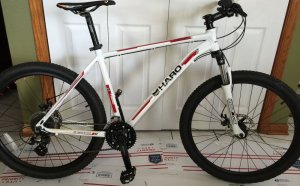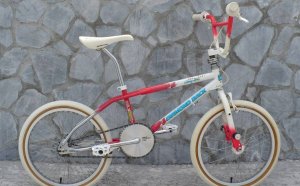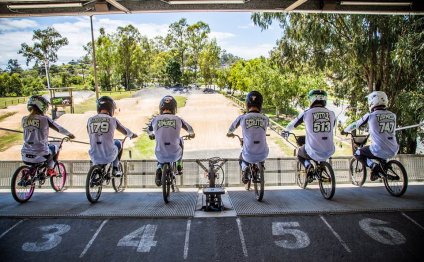
Pro Freestyle BMX Bikes
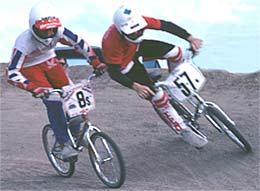 Whether you're looking for your self, or another person, responding to several questions makes selecting the most appropriate type of BMX bike much easier. Do you want to race? Would you require a lightweight frame and parts? Are you going to be stalking the streets or diggin' within the soil? Will your play ground become regional skatepark, BMX track or your buddy's backyard ramps? Thinking about these specific things and having recommended about what you desire and for which you'll drive, will make sure you get suitable BMX cycle.
Whether you're looking for your self, or another person, responding to several questions makes selecting the most appropriate type of BMX bike much easier. Do you want to race? Would you require a lightweight frame and parts? Are you going to be stalking the streets or diggin' within the soil? Will your play ground become regional skatepark, BMX track or your buddy's backyard ramps? Thinking about these specific things and having recommended about what you desire and for which you'll drive, will make sure you get suitable BMX cycle.
Because people often toss across the "BMX" term generically, it is important to also understand that you can find three different types of BMX bikes: the actual BMX bicycle, the freestyle bike as well as the dirt jumper or perhaps "leap" cycle.
What's the difference between all of these different types of BMX bikes. That's what we're right here to explain. Absolutely nothing beats looking at these great bikes personally, also. After you've read this article, come right into our shop and look 'em completely!
20-Inch Bicycle Types
|
Kind |
Description |
Features |
Ideal Usage |
|
BMX |
A dirt-ready race bike |
Knobby tires, lightweight framework and parts, strong rear braking system |
Dirt-track rushing, going quickly off road for short distances |
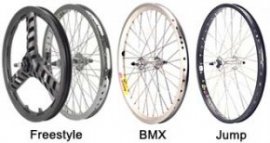
Freestyle |
A super-sturdy stunt and strategy bike |
Ultra-beefy frame and wheels, pavement-ready tires, cable-detangling headset, axle pegs |
Operating at skateparks, discovering and carrying out stunts and tricks |
|
Leap |
Sometimes labeled as a Dirt Jumper, they're really a fusion of BMX and freestyle bikes |
Sturdy frame and tires, back brake, knobby tires |
Carving regional trails, leaping ramps inside buddy's back yard |
BMX: True BMX bicycles started all of it, back in the belated sixties. They were knockoffs of motocross motorcycles and were designed for rushing over jumps and around berms when you look at the soil. Pretty soon children everywhere had them, racers or not. BMX bikes are still created for rushing, although you don't have to race to savor the light weight, rate and dust worthiness of those devices. They generally have 20-inch wheels (24-inch-wheel "cruisers" would be the exception), knobby tires, upright handlebars with crossbars, tiny saddles, lengthy cranks and back hand brakes. The structures tend to be light and durable, and the higher the purchase price, the less heavy they get.
BMX bicycles are generally made of chromoly metal or aluminum. Chromoly frames tend to be a little heavier and much more economical. Aluminum structures are less heavy and generally are frequently made from oversize or exotically shaped tubing. Besides weighing less, aluminum normally rustproof. So, in the event that you scrape your frame, there isn't any want to rush to the touch it up.
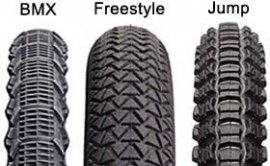 BMX bicycles also come in various framework sizes. Our chart under reveals the estimated fit based on driver age. Last fitting is the best carried out inside our shop. Also, the professional and Expert bikes are sometimes obtainable in XL (extra-long) sizes aswell.
BMX bicycles also come in various framework sizes. Our chart under reveals the estimated fit based on driver age. Last fitting is the best carried out inside our shop. Also, the professional and Expert bikes are sometimes obtainable in XL (extra-long) sizes aswell.
|
Size |
Suits |
|
|
Mini |
Minimal standover height, 155-mm cranks, 20 x 1 1/8" tires |
4 to 6 years of age |
|
Junior |
Slightly larger frame than Mini, 165-mm cranks, 20 x 1 3/8" tires |
6 to 9 yrs . old |
|
Specialist |
Longer top pipe than Junior, 170-mm cranks, 20 x 1.5-1.75" tires |
9 to 13 yrs . old |
|
Pro |
"Full-size" frame, 175-180-mm cranks, 20 x 1.75-2.2" tires |
12 or over |
Freestyle: These entered the scene shortly after BMX bicycles. Without rushing, the freestyle bicycle's ideal use is actually for flatland tricks, hostile street driving and having vertical at skateparks. It's also a fantastic bicycle for driving to school, the store and the pool. Super-sturdy construction is a higher concern than light weight. The tires usually are either "mag" wheels made from sturdy plastic (far left in the photo below), or heavy-duty models with 48 cable spokes. The tires tend to be 20 x 2.125 or wider, with relatively smooth treads, simply because they're predominantly pavement pounders. Axle pegs in many cases are included (bikers stand on all of them for stunts), while some makers leave them down to pick yours. Freestyle bicycles have front and rear brakes. The leading cable is routed through a "rotor" or "detangler, " makes it possible for the handlebars to be spun entirely around without tangling the brake cable.
Dirt Jumper: Once the name indicates, soil jumpers (also called jumpers) are made when planning on taking journey. They even bridge the large space between BMX bicycles and freestylers (beefier versus previous; lighter than the latter). They usually do not have forward brakes and their brawny rims typically function 36 rugged 13-gauge spokes, in place of turning to 48 spokes the way freestyle bicycles do. They truly are sporadically loaded with 24-inch rims, which are an ideal choice for bigger cyclists. The tires would be the most heavily treaded of every associated with BMX types.
YOU MIGHT ALSO LIKE



Share this Post
Related posts
Haro Freestyle BMX Bikes
In the summertime of 1981, Bob Haro and fellow Haro Trick team user Bob Morales put down on a three-month trip of united…
Read MoreDiamondback BMX Freestyle Bikes
Diamondback Mini Viper vs. RoyalBaby Freestyle vs. Torker Throttle Your child features learned to zoom with confidence across…
Read More
